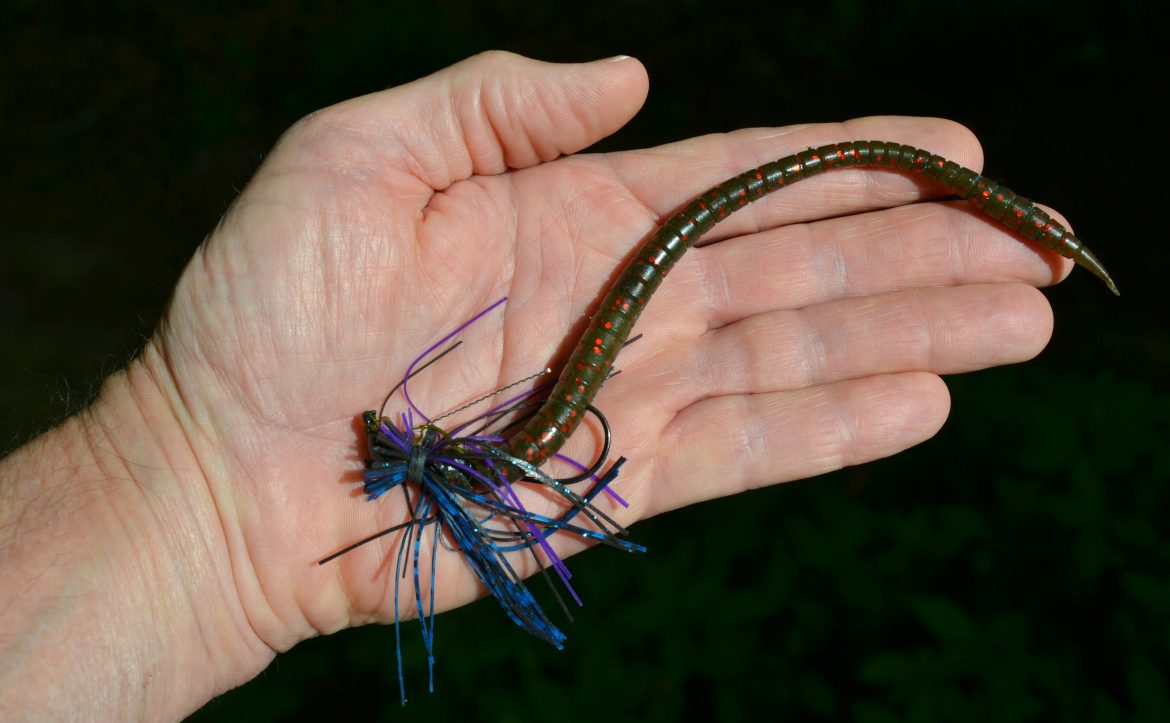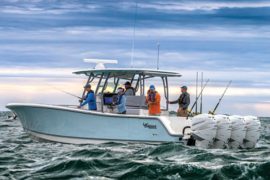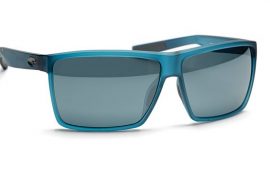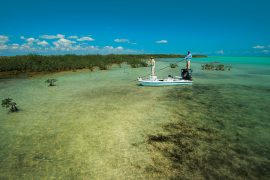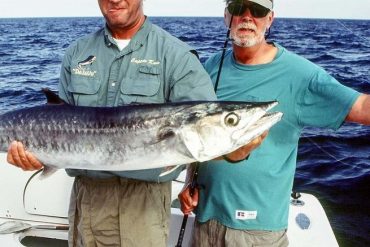A brief intro to the rapidly expanding world of bass jigs.
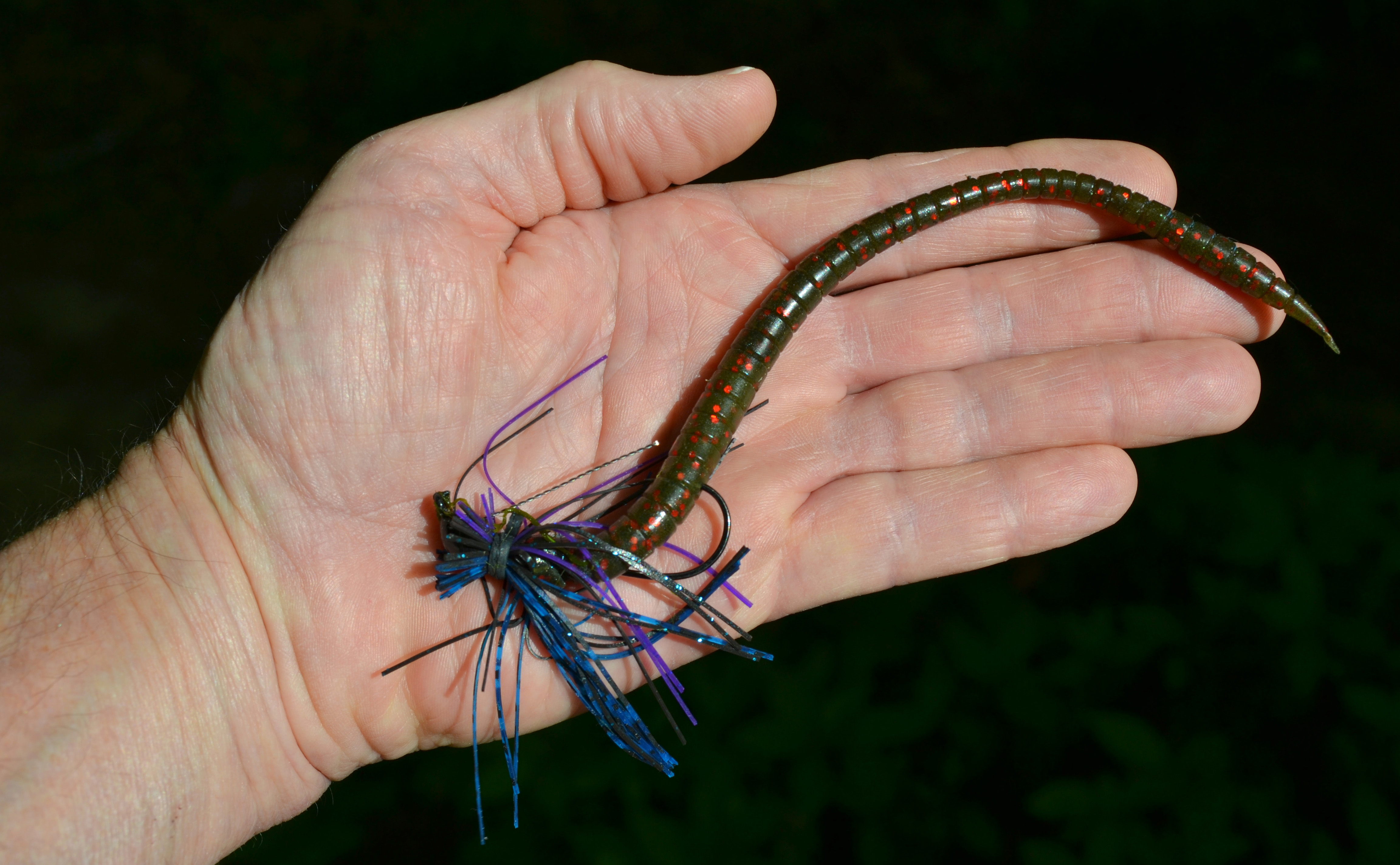
Lightweight finesse jig, great in clear water.
Jigs can be fished anywhere from right on the surface to as deep as you’d care to go—it all depends on the weight, the design, and how fast they’re worked. Here’s a look at some of the variations that might help your fishing on Florida waters:

Swim jig with soft plastic shad tail added.
Swimjigs
Swimjigs are the least jig-like of bassing jigs. They typically weigh less—3/16 to 5/16 ounce—and have flat or semi-vee bottoms, sort of like a bass boat, which helps them to plane across the surface when desired, and to glide along at mid-depths. Those with line ties on the very front of the head are designed for surface operation and for “skipping,” which is sidearming them to skitter under docks and overhanging trees, a deadly tactic on bright days. These lures can be skittered over thin weeds and lily pads without hanging up, and make a great post-spawn offering when the fish are still up shallow.
Those with line ties on the top are more often used to swim a jig at 1 to 3 feet, stitching it in and out over submerged eel grass or hydrilla, and some are made as heavy as 1/2 ounce.
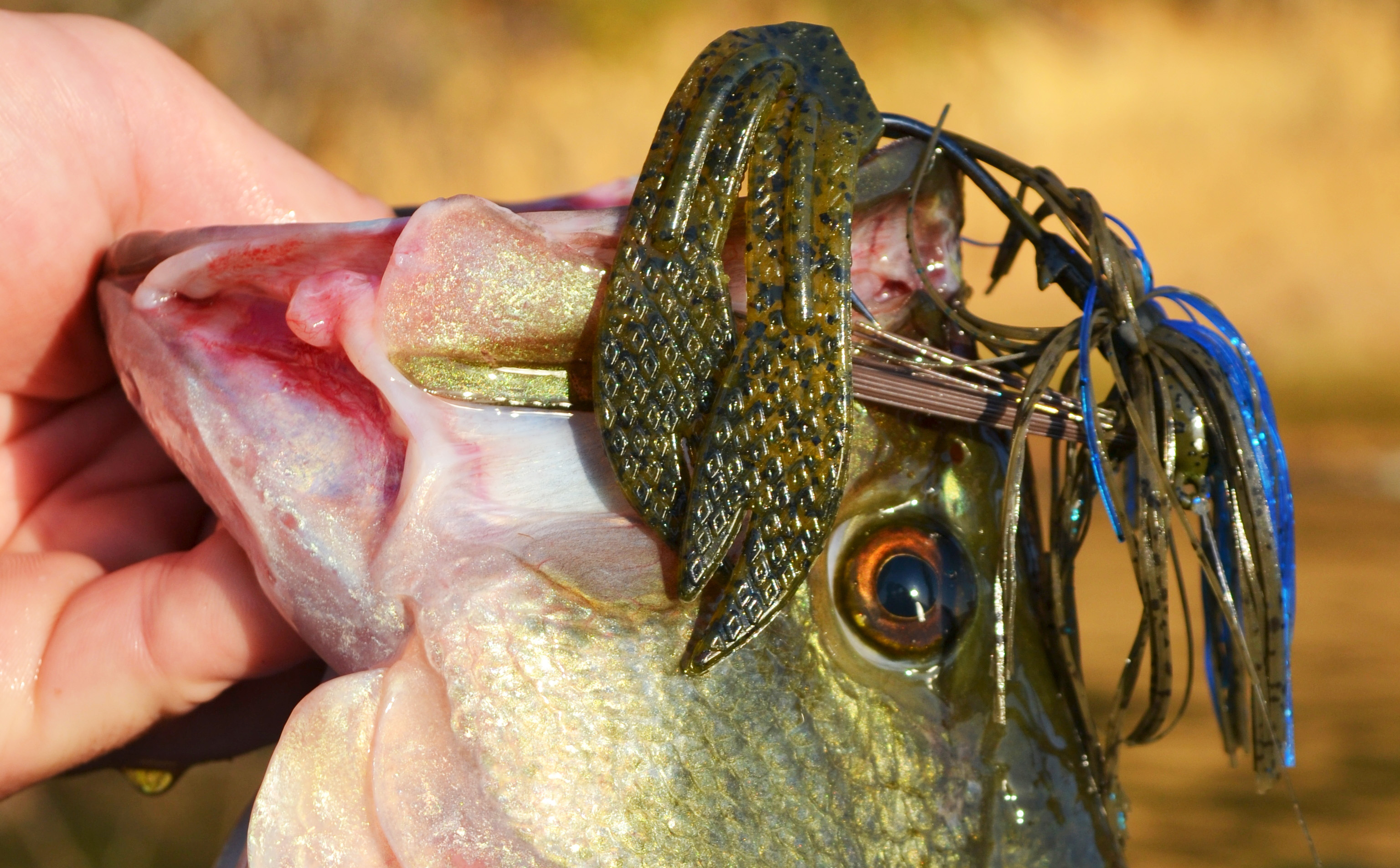
Flippin’ Jigs
Flippin’ jigs are designed for close range work on big fish in the heaviest cover, and consequently they come equipped with thick wire hooks that could get a tarpon’s attention. They’re typically available with rounded lead heads in weights from 3/8 to 1.5 ounces. Even though they’re fished in shallow water—typically 1 to 3 feet—the added weight makes it much easier to punch through the mat of moss, hydrilla and hyacinth that forms the roof on many bass dens. They also stay in touch with the lure as it’s yo-yoed up and down….

